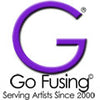
How to Slump Recycled Glass Bottles
How to in a kiln
1. Measure your kiln shelf as this will be the maximum height of a bottle you can slump in your kiln. A wider bottle is better as a cutting surface.
2. Clean and disinfect the bottle. Turn upside down and allow it to dry completely.
3. Recycled glass bottles have one thing in common, you have no way of knowing what COE the glass is. What does this mean?
- You might need to fire the glass a hotter temperature than 1450 degrees for COE 90 & COE 96 glass in order to get the glass moving and allow it to slump enough to be flat. Note: The bottom of the bottle will normally fold inward towards the bottle body. So this area will now be 4 layers of glass thickness and then the rest of the bottle.
- You may or may not be able to add glass embellishments using COE 90 or COE 96 without them or the bottle developing stress cracks or cracking completely because you will not know if the COE for the float glass used in the bottle. COE must match for glass compatible when melting them together.
Special Note: Stress cracks in glass from incompatible glasses being fired together can crack completely at any time. So even something fired days oradmiadmin weeks ago can break at any time.
Decorative Solutions: Perform a full fuse, then add small amounts and small pieces of another COE which you tack fuse to the surface of the glass or use paint or paper products that do not require a matching the COE (to avoid cracking the glass) for embellishing the bottle like: Glass Enamel or even Bubble Paints or paper products like Dicro Slide™ and Fusible Glass Decals.
- You may want to apply a devitrification spray to the bottle to help prevent devitrification. Blue and Amber bottles are the most likely candidates to loose their luster at high temperatures or long soak times.
4. Cover your kiln shelf with either Thin fire paper or kiln wash.
5. If you want to hang your bottle, place a U shaped piece of wire in the neck to form a wire loop for hanging on a hook later. You should have at least 1/2 inch of the wire in the bottle neck and at least 1 inch of the U shape hanging out the neck. 17 gauge High Temperature wire works well but you can also use a 20 gauge twisted copper. Both types of wire will need to be wire brushed after firing to clean the surface before using.
6. Make sure you kiln shelf is level. Lay the bottle in the kiln on its side and if it wants to roll, place a small folded piece of thin fire under the edge to stabilize.
7. Because you are dealing with unknown COE, use the slowest Full Fuse program and also anneal slowly for best results. It is best to get to at least 1450 to 1475 for at least 10 minutes. If you are creating a manual program, fire the kiln to 1100F and soak for 10 minutes, then increase around 250 degrees per hour to 1300F, then fire as fast as your kiln will go to 1450 to 1475, soak 10 minutes.
8. Flash vent the kiln to 1100F to speed up cooling and to help prevent devitrification.
9. Close the kiln lid and allow the glass to anneal by letting the kiln to cool until it reaches room temperature. Do not open the kiln under 1,000 degrees until at room temperature to avoid thermal shocking the bottles by cooling too fast.
Other Suggestions and Solutions:
If you are having trouble removing the label with soaking, try scoring it with a razor blade before soaking in very hot water. You may also find Mineral Spirits and products like Goof Off are helpful. On a rare occasion, you will find the bottle has a plastic medallion attached. Using a small hand held torch, hit the surface randomly until the glue or the plastic medallion start to bubble. This will often allow you to pop it off with a small plain screw driver. Never hold a steady flame to the surface for any length of time or you could crack the bottle or make it hot enough to burn your hand.
1. If you want the bottle to slump flatter, increase the soak time but it is best to use a coat of devit spray or liquid on the surface of the glass.
2. If your bottle cracks, then you need to slow down the heating or cooling rate of temperature. In particular, if the bottle cracks after removal from the kiln, then the problem is the annealing cycle.
3. If kiln wash sticks to your bottle, try slumping to a lower temperature and soaking longer.
4. Larger and thicker glass bottles will require slower firing rates and longer annealing soaks.
5. If you find you have captured large air pockets in the bottle, this is normally due to firing the bottle too quickly but some bottle designs will always create an air pocket. You can try to cut off the bottom of the bottle using a Band Saw and grinding before slumping. Another option is to drill a hole in the bottom of the glass bottle to help the air escape.
Other Tips:
See our Bottle Molds and Glass Shape Molds
Click Here to see our Bottle Art Book with over 61 projects
Click Here to read the manual
- Choosing a selection results in a full page refresh.
!
